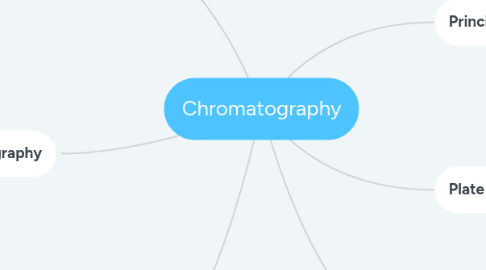Chromatography
Door Stephen Stein


1. Pragmatics and Math
1.1. Height: Defined by the length of the column over the number of plates
1.2. Resolution of two peaks is proportional to the number of theoretical plates.
2. Gas Chromatography
2.1. Gas acts as a mobile phase, and is typically composed of easily volatilized liquids.
2.2. The stationary phase is a solid, and can be either polar or nonpolar to give better separation of species.
2.3. Capillary size also affects the available volume of that can be processed, with smaller capillaries being limited to less volume.
2.4. Temperature also plays a role in separation, where a varying temperature over the course of the separation can get better resolution in species that bunch up under constant temperature.
2.5. Either a mass spectrometer, or a flame ionization detector are typically used.
3. Liquid Chromatography
3.1. Similar to gas chromatography, but the mobile phase is a liquid, while the stationary phase remains a solid.
3.2. Species in solution are attracted to the stationary phase differently, same as gas chromatography. This results in certain species staying on the column longer.
3.2.1. Sometimes this process does not even need a detector in the case of some organic compounds, as their separate color bands is readily apparent.
3.3. High Performance Liquid Chromatography (HPLC) is a common method of quickly running a column, and is partially automated, and uses high pressure
4. Principles/Theory
4.1. All solutions try to maximize Entropy. They mix.
4.2. But they can be separated out by using different levels of molecular interaction
5. Plate Theory
5.1. The column used for separation is considered to be in equilibrium, where species move between the mobile and stationary phase
5.1.1. Species that bind more to the stationary phase move slower than those with less affinity

